The most significant event to date of the deconstruction of Montreal’s 60-year-old Champlain Bridge took place in early January.
That’s when the bridge’s main superstructure steel span was disconnected from the rest of the bridge and, in a first in Canada, delicately lowered to two waiting barges below.
The 118-metre, 2,200-tonne pale green span, located over the narrow canal-like Saint Lawrence Seaway section of the St. Lawrence River, came down very gingerly, at level, over 14 hours, part of the culmination of two years of detailed bridge dismantling design and planning.
This engineering feat, lowering the main span 33 metres, was accomplished using steel wire cables from strand jacks installed on top of support beams. These in turn were attached on either side to the existing bridge superstructure. Some 50 workers directly and indirectly oversaw the operation.
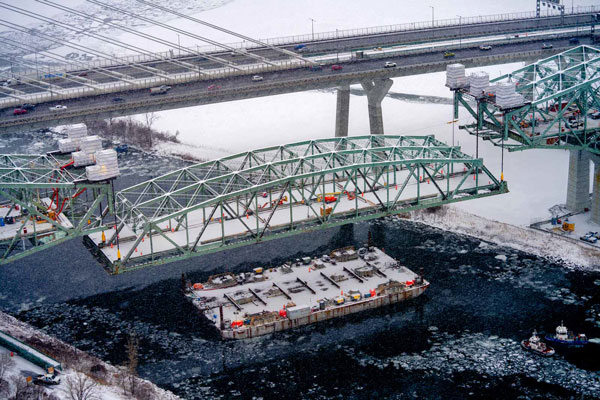
“This step can only be performed at this time of the year when there are no commercial shipping activities in the Seaway,” project spokeswoman Nathalie Lessard said. “The operation also requires optimal weather conditions.”
The bridge, a former main artery connecting the city centre and south shore suburban Brossard — and for decades a major trade route to southern Quebec and the United States — had been prematurely decommissioned due to a host of structural flaws and replaced by the new parallel cable stayed Samuel De Champlain Bridge simultaneously in 2019.
“Because of problems associated with the original design of the bridge and its drainage problems, several structural elements were attacked by corrosion which shortened its service life,” Lessard, of Jacques Cartier and Champlain Bridges Inc. (JCCBI), a federal Crown corporation, said.
The old bridge’s deconstruction is costing $400 million and includes $225 million for the dismantling itself as well as funds for environmental protection, reclamation and material recycling, shoreline redevelopment, even restoration of the fish habitat.
The work began in August 2020 and will last until January 2024. It’s being carried out by the Nouvel Horizon Saint-Laurent (NHSL) consortium of Pomerleau Inc. and Delsan A.I.M. Environmental Services Inc. The project was awarded under the auspices of JCCBI.
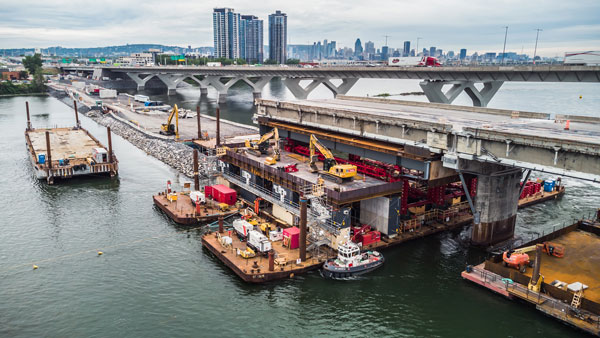
The project is massive. The bridge is 6.9 kilometres long with 3.4 kilometres over the river. Intricate scheduling has required dismantling of the parts of the bridge over the water that can only be done in January and February when there are no ships using the river.
Deconstruction by “dismantling” was chosen over traditional blasting to protect the quality of life for nearby residents, reduce noise and dust and protect air and water quality. As well, this “sustainable” project will see 90 per cent of materials reclaimed or recycled, 287,000 tonnes altogether.
Prior to this winter’s river work as much as 50 per cent of the deconstruction had already taken place on land. This included removal of 26 spans, 14 piers and four footings on the neighbouring Ile des Soeurs (Nuns Island) abutment.
The work on water is being carried out by two methods: the use of a dozen barges, and the build-out of jetties where the river is too shallow for the barges.
The barges themselves move around and are configurated like jigsaw puzzles around the remaining bridge piers after the bridge deck spans have been removed. High-capacity excavators then demolish the piers and underwater footings surrounded by sheet pilings.
But what’s most impressive is the so-called “Giant of the River” catamaran barge.
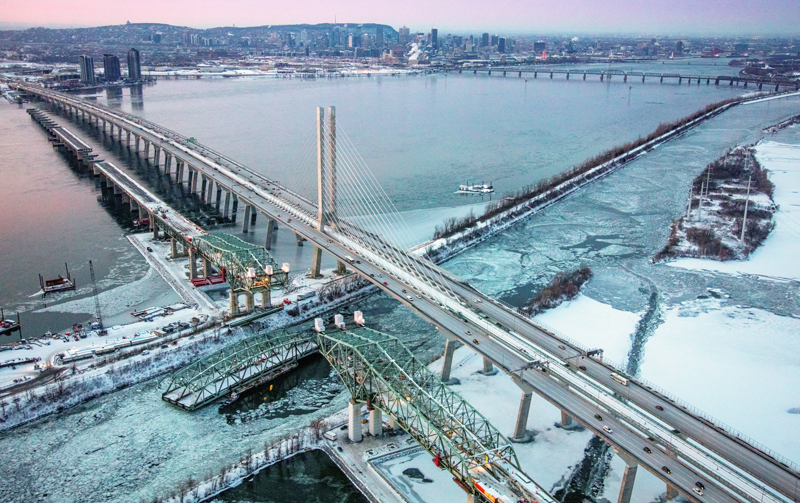
To remove the 30 flat concrete spans of former deck roadbed the consortium built a “unique tool.” This is a 76-metre-by-41-metre catamaran barge, the equivalent to two NHL rinks.
This “catamaran” is actually made up of two single hull barges connected by steel caissons and beams welded on to the decks of each barge. It’s then topped by a system of six hydraulic lifting towers capable of supporting up to 4,800 tonnes.
The towers support a giant platform on which the removed concrete span is placed and then lowered. The barge also has a dozen auxiliary hydraulic systems designed to move around various loads and components of more than 30,000 pounds.
This barge in turn is held in place by a winch barge which maintains the catamaran’s accurate placement in the water during the critical span removal.
Meanwhile, this month’s removal of the main steel superstructure will be followed by the dismantling of the other cantilever superstructure sections and anchor spans using a crane set up on the jetties and the Seaway dike.
Cranes on both the barges and remaining bridge deck are also removing 50 sections of 56,000-kilogram modular steel mesh segments that ran along the bridge undersides.
These various barges also serve as water transports to take the dismantled sections and materials to the reclamation site at the project’s periphery. Some 250,000 tonnes of concrete, 25,000 tonnes of steel and 12,000 tonnes of asphalt will be reused or recycled.
In addition to the dismantling’s environmental and reclamation goals the JCCBI is working with various Canadian research bodies and universities on 12 R&D projects expected to improve knowledge related to the performance and sustainability of infrastructures like bridges.


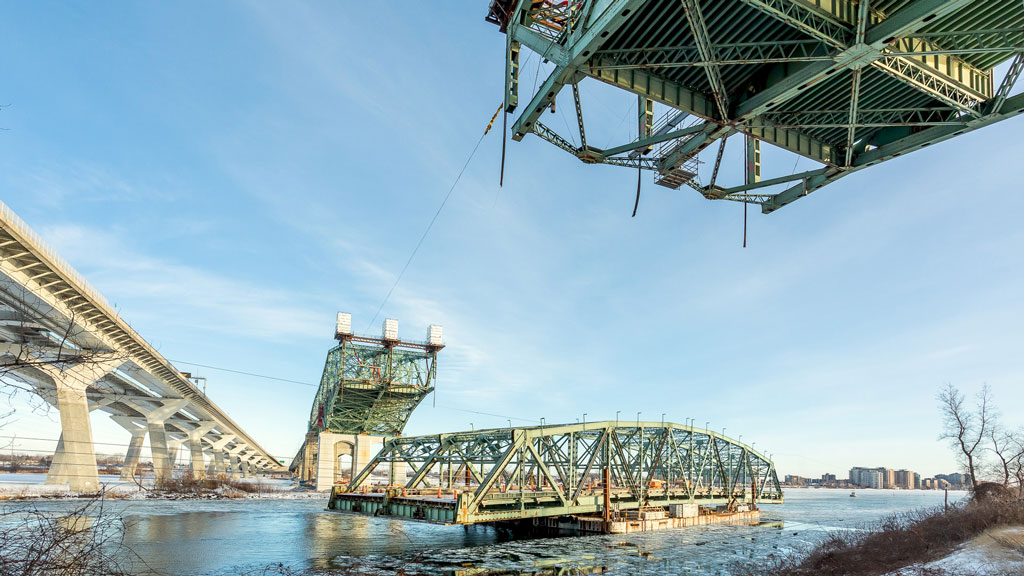


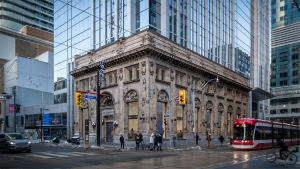
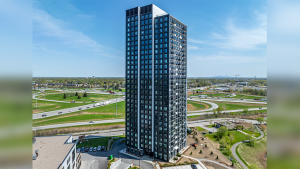


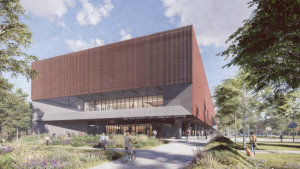

Recent Comments